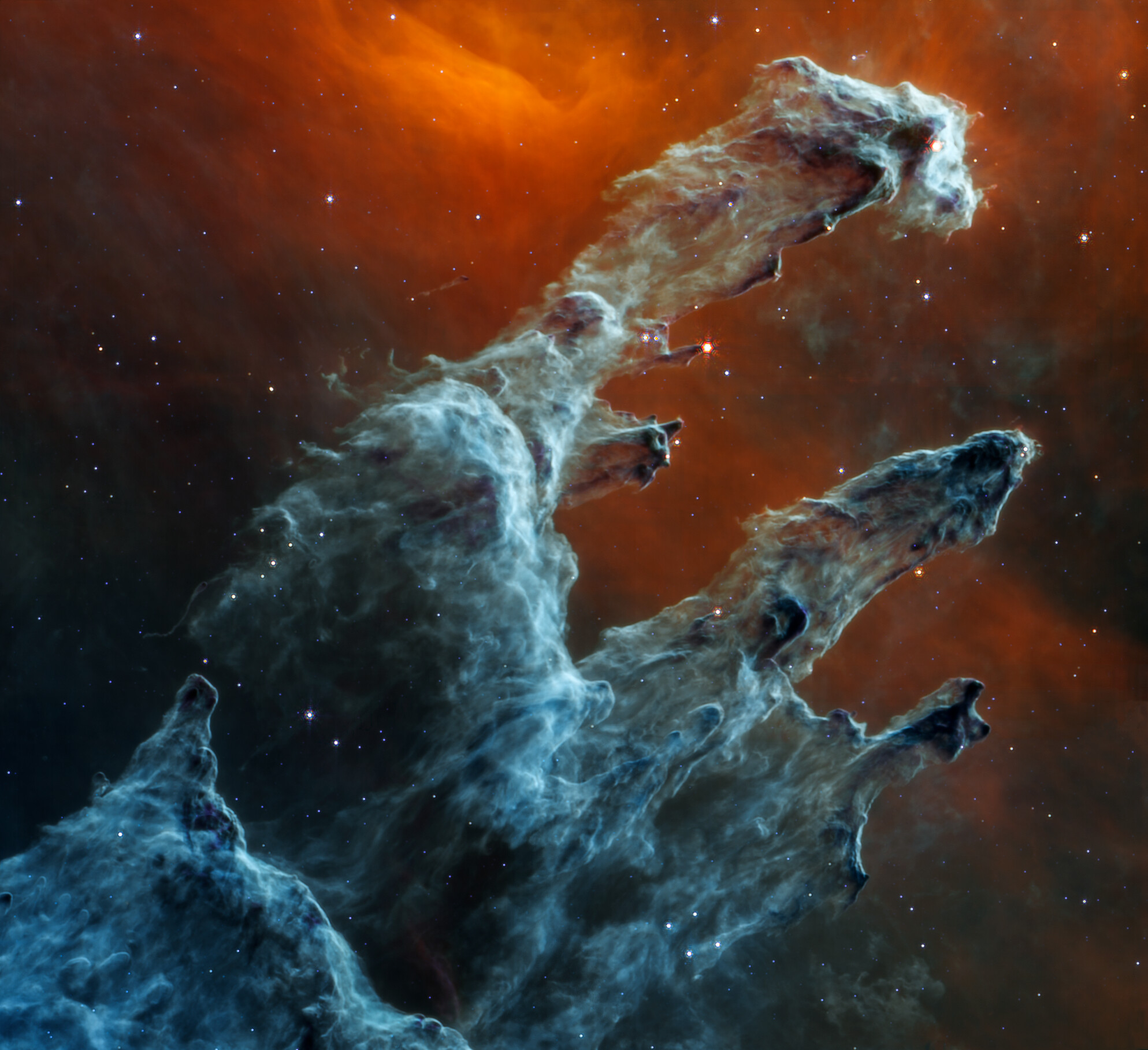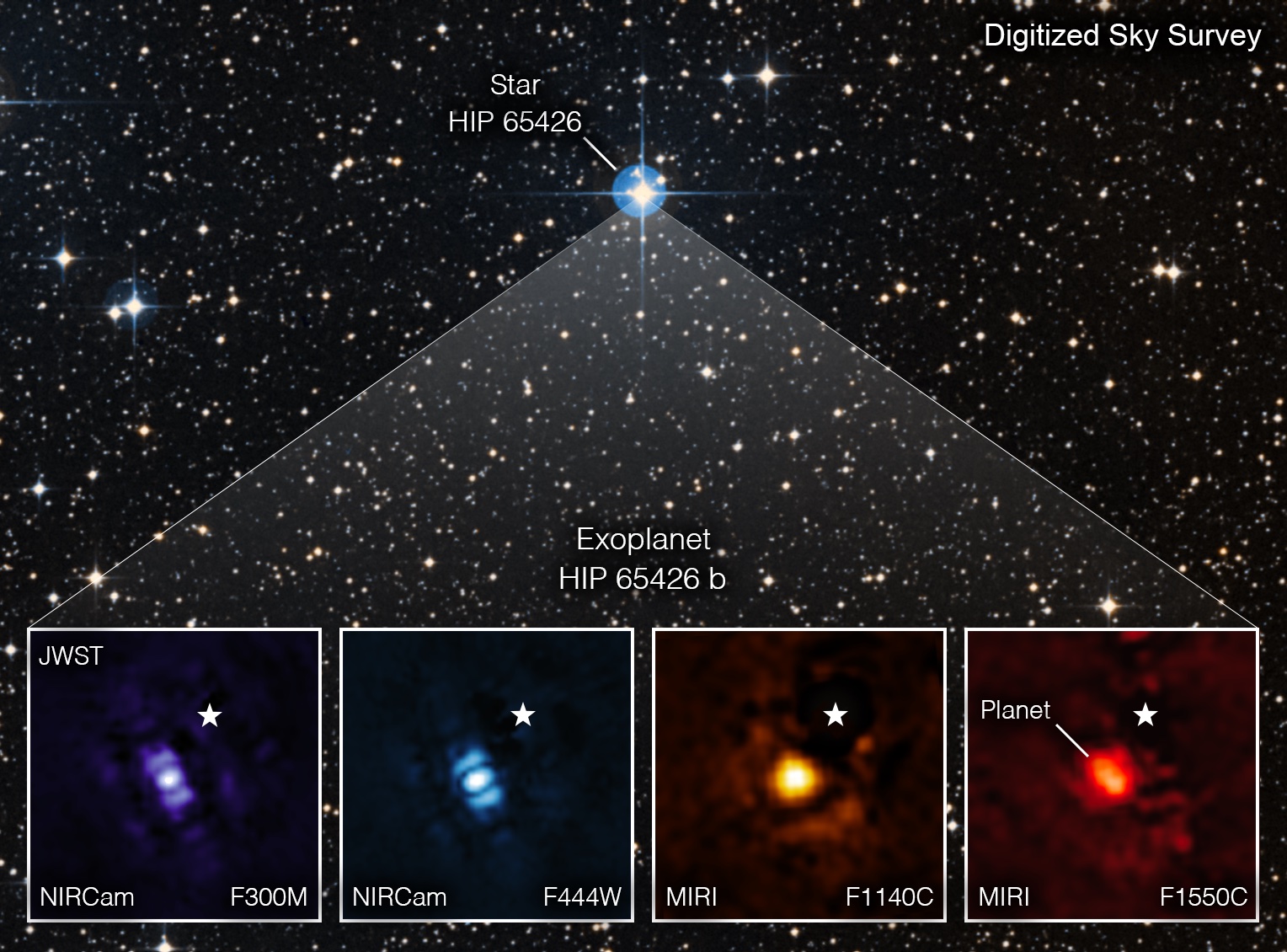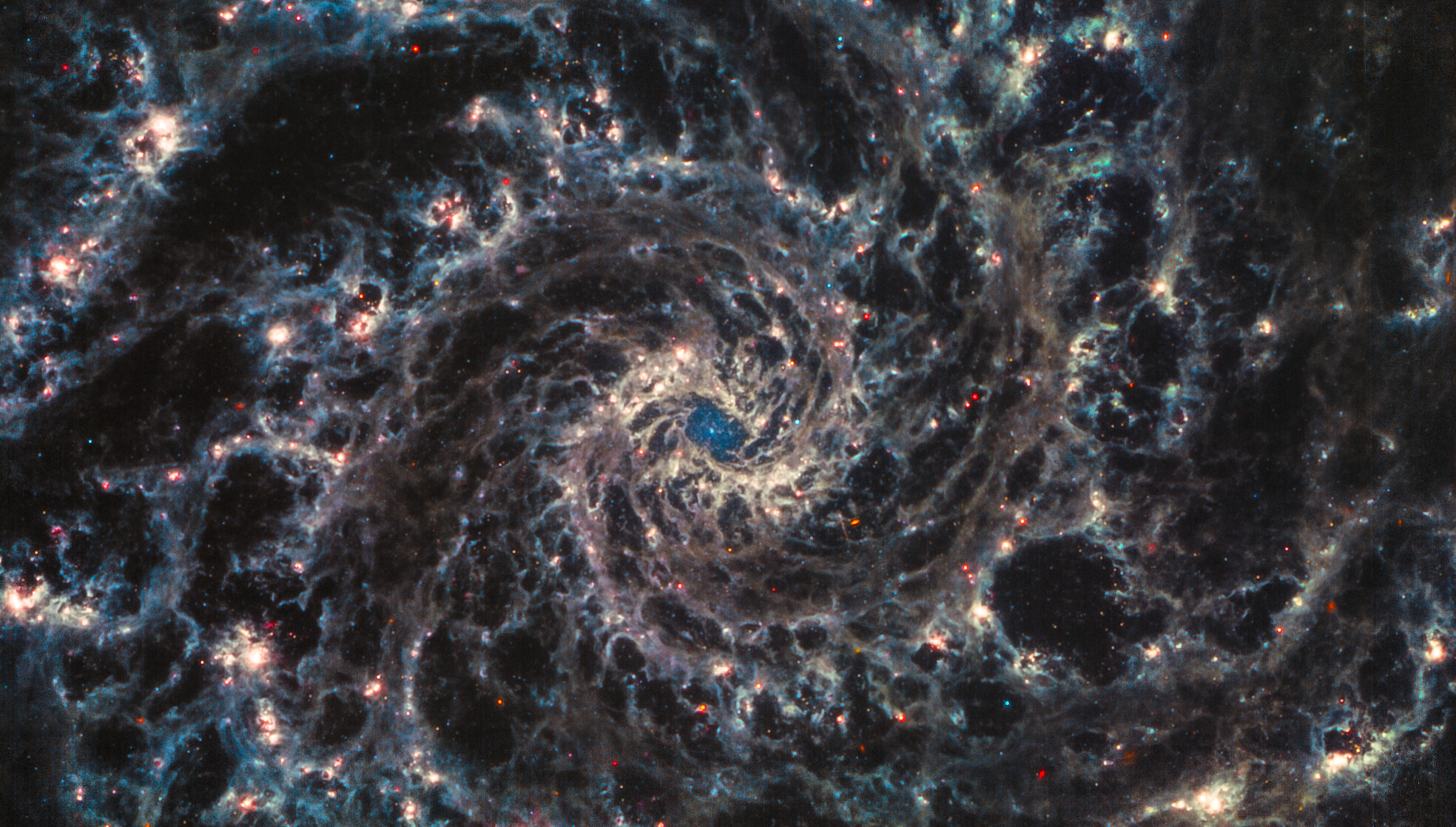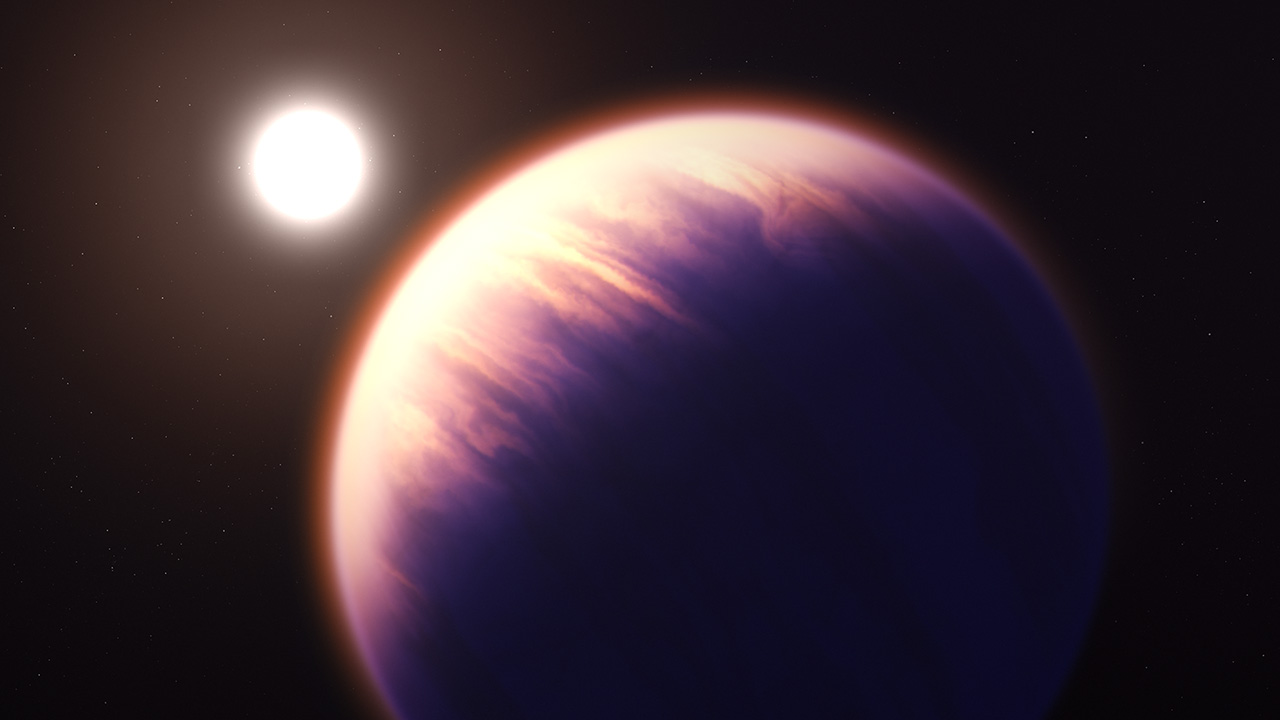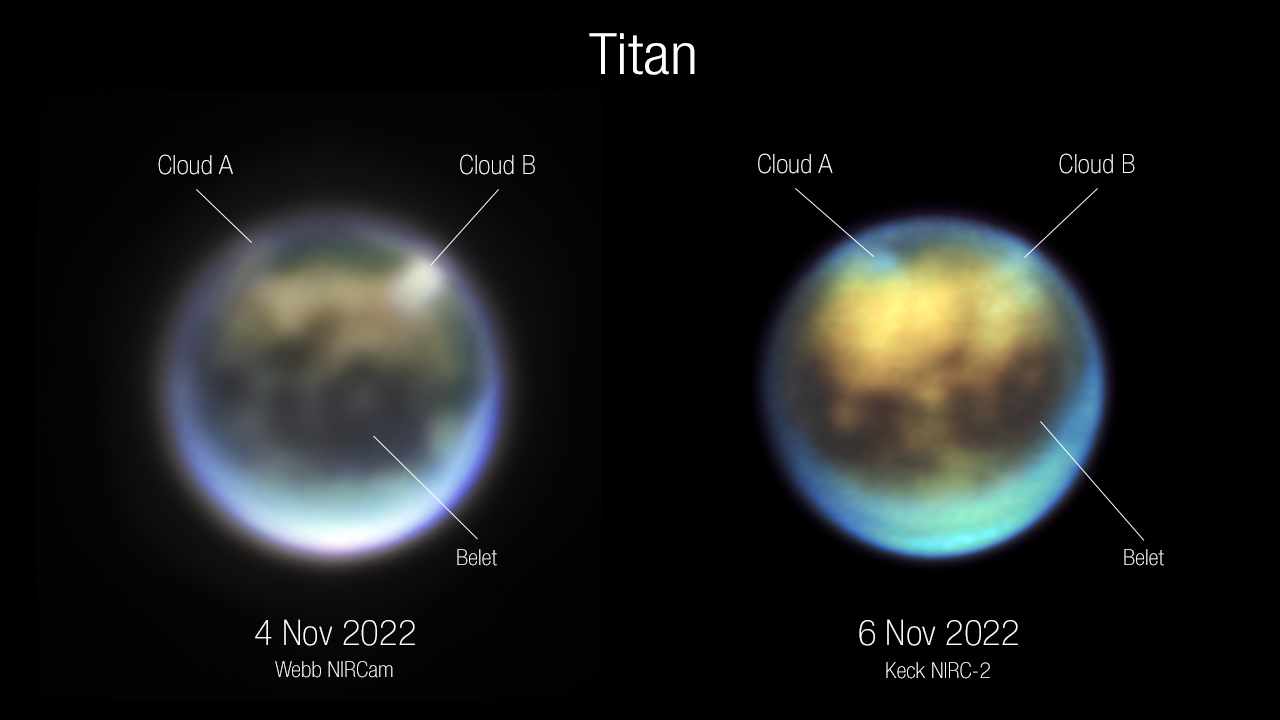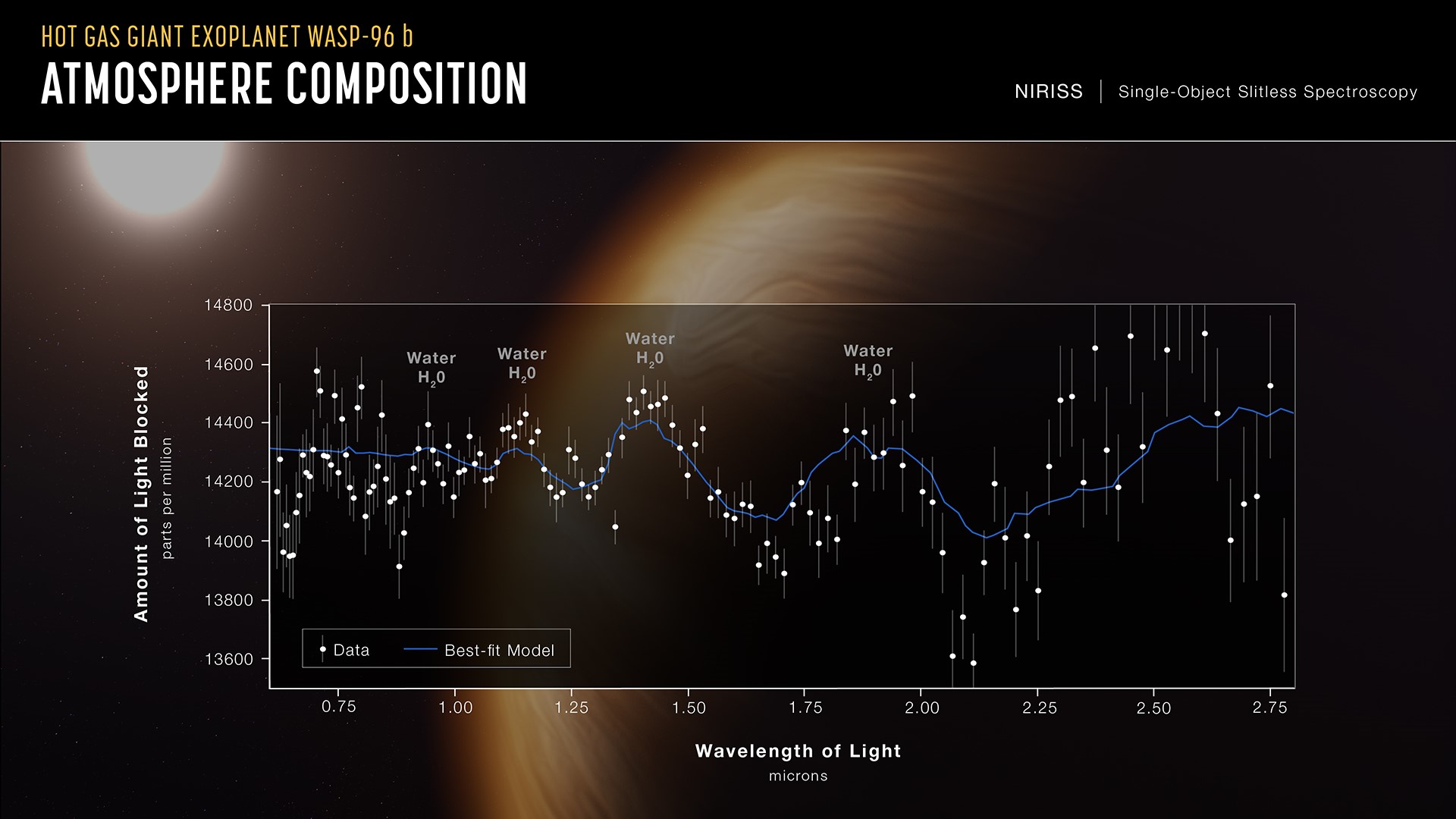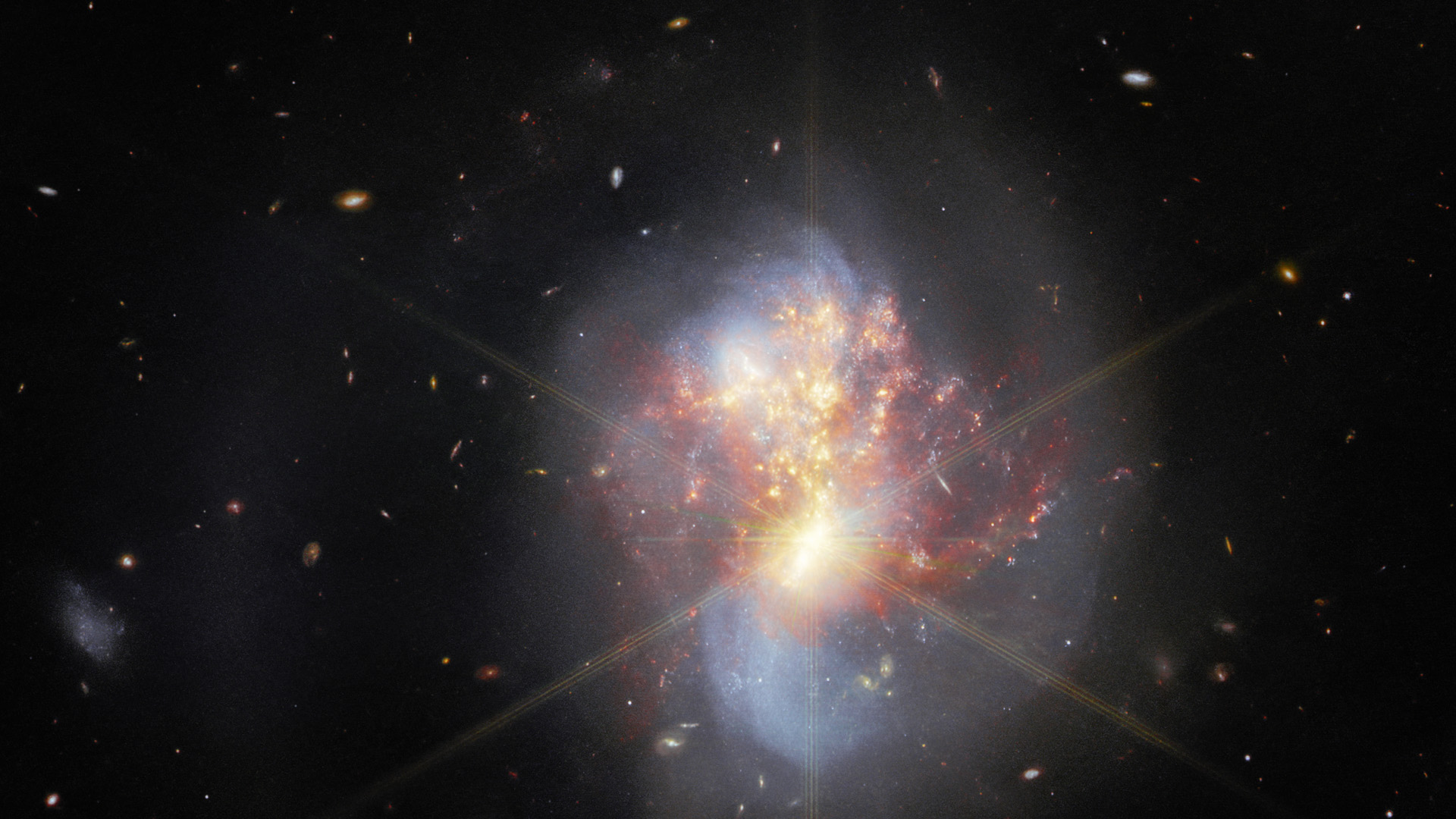12 amazing James Webb Space Telescope discoveries across the universe
The James Webb Space Telescope is peering across the universe to discover new things about planets, galaxies and other cosmic objects.
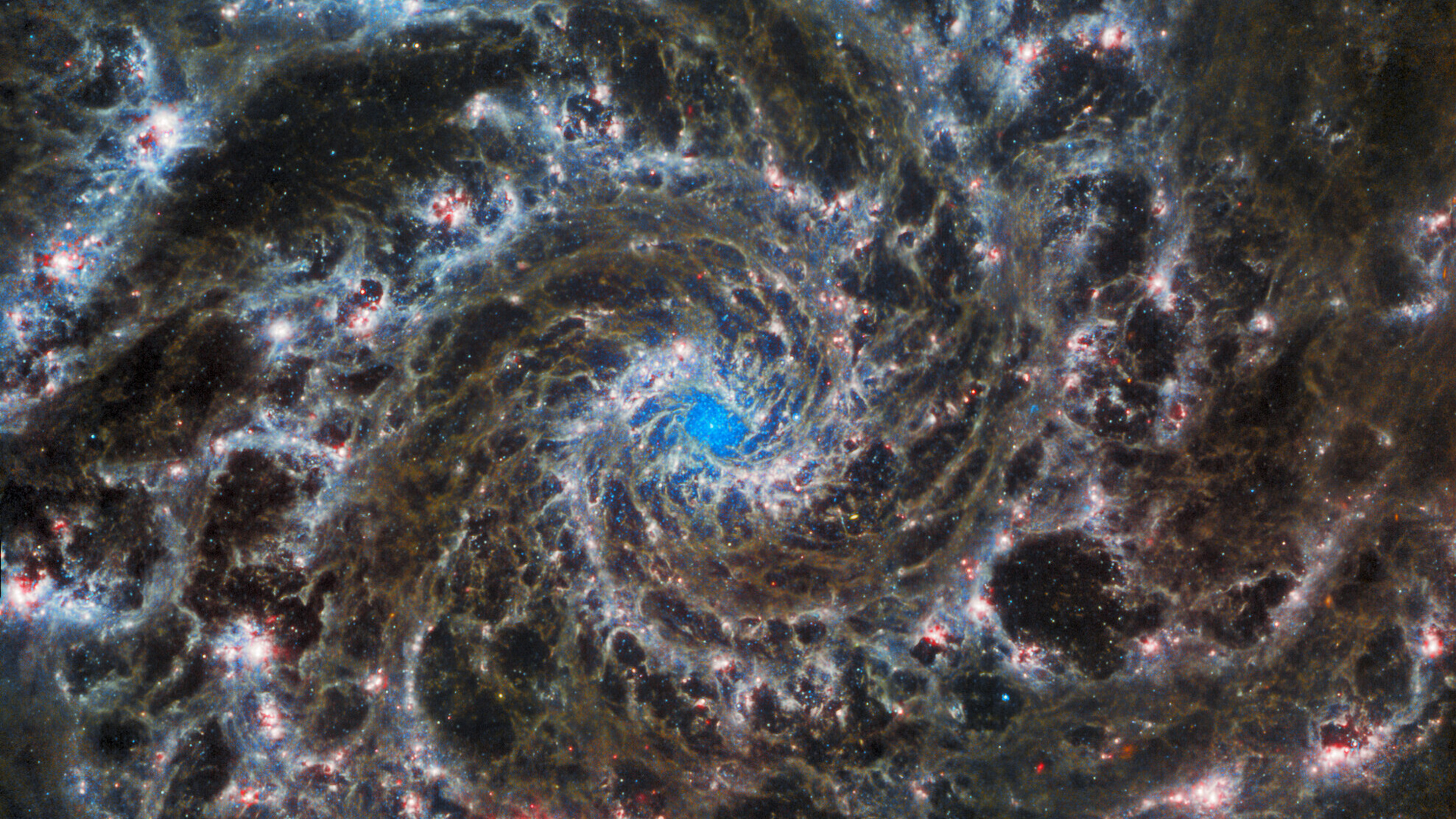
NASA's deep-space observing telescope is looking at the universe like never before.
The James Webb Space Telescope (Webb or JWST) is a pathfinder of scientific discovery, generating incredible insights about galaxies, planets, stars and all sorts of interesting cosmic objects. The telescope is near the beginning of its cosmic journey, as it is rated for 20 years of operations and just launched in December 2021.
Billed as a successor to the venerable Hubble Space Telescope, Webb is also breaking ground in science excitement. People around the world are sharing its images or generating new insights by manipulating raw information.
In February 2023, search engine giant Google tested its new artificial intelligence (AI) bot, called Bard, with a Webb question. Unfortunately, Bard flubbed a basic fact: Webb was not the first telescope to directly image an exoplanet. But Webb has made many other incredible discoveries, which you can see here.
Related: The James Webb Space Telescope's best images of all time
Below are 12 of Webb's top science breakthroughs.
1. JWST hailed as greatest science breakthrough of 2022
When Webb launched on Christmas Day of 2021, it was the culmination of decades of work by NASA scientists and engineers. The launch went off without a hitch, as did the numerous steps of the telescope's deployment in the following months. In mid-July, Webb released its stunning first images. The infrared telescope will help us see almost every part of our universe in greater detail, including the most distant galaxies, allowing us a glimpse into the past.
Breaking space news, the latest updates on rocket launches, skywatching events and more!
"Within days of [the telescope] coming online in late June 2022, researchers began discovering thousands of new galaxies more distant and ancient than any previously documented — some perhaps more than 150 million years older than the oldest identified by Hubble," editors of the journal Science wrote in a statement. The journal named Webb as its Science Breakthrough of 2022, while the journal Nature chose Jane Rigby, Webb's operations project scientist, to include in their list, "10 people who helped shape science stories" list for 2022.
"What's more, the telescope is capable of collecting enough light from astronomical objects — ranging from birthing stars to exoplanets — to reveal what they are made of and how they are moving through space," the editors of Science wrote. "This data has already begun to reveal the atmospheric composition of planets hundreds of light-years from Earth in great detail, offering hints as to their ability to potentially support life as we know it."
2. Stars born in the Pillars of Creation
The Pillars of Creation in the Eagle Nebula has long been one of the Hubble Space Telescope's most iconic images. But though the telescope, which detects mostly visible light, captured the structure’s impressive clouds, the "creation" happening within them was hidden. Now, Webb's infrared imaging has managed to capture it in the form of numerous protostars. Appearing as tiny red dots against the smoky backdrop of the pillars, these collections of dust and gas, each many times larger than our solar system, are stars being born.
"These young stars that we see in the image are not yet burning hydrogen," Derek Ward-Thompson, head of the school of natural sciences at the University of Central Lancashire in the U.K., told Space.com in October. "But gradually, as more and more material falls in, the middle becomes denser and denser, and then suddenly, it becomes so dense that the hydrogen burning switches on, and then suddenly their temperature jumps up to about 2 million degrees Celsius [3.5 million degrees F]."
The image was created using different colors to represent mostly invisible infrared wavelengths, said Anton Koekemoer, a research astronomer at the Space Telescope Science Institute in Baltimore who put the image together using Webb’s data, told Space.com in October.
The only visible parts of the image appear blue — those would look red to us. As the radiation increases in wavelength, so do the wavelengths of the colors, with red parts of the image, such as the protostars, emitting radiation about six times the wavelength a human eye can see. Images like this one not only show Webb's capabilities as an infrared telescope, said Ward-Thompson, but could also help us understand how stars form, including our sun.
3. Webb's first direct image of an exoplanet
Scientists discovered the first exoplanets in the 1990s, and today there are over 3,000 known worlds orbiting faraway stars. Still, only around two dozen of these have been imaged directly. Most exoplanets are so far away that they can only be detected through a dip in the light of the star they are orbiting, when that planet passes in front of its host star. But Webb could change that. In September, it captured its first direct image of an exoplanet.
"This is a transformative moment, not only for Webb but also for astronomy generally," Sasha Hinkley, an astronomer at the University of Exeter in the U.K. who led these observations, said in a statement in September.
The planet, called HIP 65426 b, was discovered in 2017. To view it, scientists used two of Webb's cameras, several filters, and the telescope’s coronagraphs, tools which blocked out the light of the central star. Along with the telescope's exceptional sensitivity, the planet has several features that make it easier to observe. At 100 times the distance from our sun to the Earth, this planet is much farther away from its host star than any planet in our solar system (in contrast, Pluto is only 40 times that sun-Earth distance from our sun). A colossal gas giant, it’s also exceptionally large — about 12 times the size of Jupiter.
4. Re-imaging the Phantom Galaxy
Though the Phantom Galaxy is difficult to find in the night sky, its brilliance is far from invisible, especially when captured in infrared with Webb. Hubble's optical image of the galaxy, also called M74, shows the galaxy's perfect spiral structure and its distribution of stars, arms extending outward from a radiant center. But a new Webb image reveals fiber-like structures of heat-emitting dust and gas, emanating from a bright center rendered in vivid electric blue. The new image will shed (infrared) light on star-forming regions scattered amongst the galaxy’s spiral arms.
A mesmerizing composite image combining the Hubble Space Telescope and Webb images features aspects of both optical and infrared observations of the galaxy. Researchers at the European Space Agency (ESA) helped create the composite image as part of an international project calls PHANGS, according to the ESA, which is utilizing Webb, Hubble, and several ground-based telescopes to capture 19 nearby star-forming galaxies in the infrared. The ESA released a video in August to showcase the three images, as well as comparing them side-by-side.
"The addition of crystal-clear Webb observations at longer wavelengths will allow astronomers to pinpoint star-forming regions in the galaxies, accurately measure the masses and ages of star clusters, and gain insights into the nature of the small grains of dust drifting in interstellar space," ESA said.
5. Mysterious, boxy ripples surround Wolf-Rayet star
In July, Webb captured an image of a distant star, called a Wolf-Rayet star, which featured Webb's signature diffraction pattern, an imaging artifact. But around the star, called WR140, is a pattern that looks equally unreal — a ripple-like pattern of concentric rings that have a peculiar, slightly boxy shape. Unlike the diffraction pattern, the unlikely-shaped rings are real features.
"The six-pointed blue structure is an artifact due to optical diffraction from the bright star WR140 in this #JWST MIRI image," wrote Mark McCaughrean, an interdisciplinary scientist in the James Webb Space Telescope science working group and a science advisor to ESA, in a twitter thread. "But red curvy-yet-boxy stuff is real, a series of shells around WR140. Actually in space. Around a star."
Wolf-Rayet stars are massive stars nearly the end of their lives, already having released much of their hydrogen into space. The strangely shaped rings are caused by the interaction between WR140 and its smaller companion star. The stars are surrounded by a cloud of dust that is sculpted into that shape by its companion star, said McCaughrean. Ryan Lau, an astronomer at NOIRlab in Arizona, led the team studying these observations as part of the JWST Early Release Science program. In October, the team published a study on the observations in the journal Nature Astronomy.
6. Finding the most distant galaxies ever
Webb was made to observe the most distant galaxies in the universe, and in mid-December, scientists confirmed that they had done just that. The telescope has officially observed the four most distant galaxies known, which also means they are the oldest. Webb observed the galaxies as they appeared about 13.4 billion years ago, when the universe was only 350 million years old, about 2% of its current age.
Scientists suspected that the four galaxies were incredibly ancient, like hundreds of others identified by Webb. As part of the JWST Advanced Deep Extragalactic Survey (JADES) researchers confirmed their age, analyzing data from the telescope’s Near Infrared Spectrograph to find out how fast the galaxies were moving away from the telescope. This is the galaxies’ redshift — how much the wavelengths of light they shed have lengthened as the universe expands. Their redshift was 13.2, the highest ever measured.
"These [galaxies] are well beyond what we could have imagined finding before JWST," Brant Robertson, an astrophysicist at the University California Santa Cruz and one of the researchers involved in the observations, said in a statement. "With JWST, for the first time we can now find such distant galaxies and then confirm spectroscopically that they really are that far away."
7. Looking at an exoplanet’s atmosphere in detail
Thanks to Webb, a planet orbiting a star in the constellation Virgo is now the most-explored world outside our solar system. The planet is called WASP-39b and is about 700 light years from Earth. It is a boiling gas giant about the size of Saturn, orbiting its host star at an absurdly close distance, about eight times closer to its host star than the planet Mercury is to our sun.
Using Webb's main camera and two of its spectrographs, scientists identified carbon dioxide in its atmosphere — the first time the gas has ever been found in an exoplanet's atmosphere, though the planet's thick atmosphere is dominated by thick clouds containing sulfur and silicates, including sulfur dioxide. Researchers were also able to use what they learned about the planet’s atmosphere to infer aspects of its history and formation. Scientists think the planet formed from a collision of smaller planetesimals, and because it has more oxygen in its atmosphere than carbon, formed much farther from its star than it currently is.
"These early observations are a harbinger of more amazing science to come with JWST," Laura Kreidberg, director of the Max Planck Institute for Astronomy (MPIA) in Germany who was involved in the observations, said in a statement. "We put the telescope through its paces to test the performance, and it was nearly flawless — even better than we hoped."
8. Glimpsing Titan’s clouds
Saturn's moon Titan is a weird — and intriguing — place. The moon has "rock" made of water ice, as well as rivers, lakes, and seas made of liquid methane and ethane. It is also the only moon in our solar system to have a thick atmosphere — a hazy one dotted with methane clouds. Scientists got a glimpse of some of those clouds in November, when Webb captured atmospheric data from the weird moon.
In a NASA statement, researchers studying Titan with Webb express their excitement on receiving the data. "At first glance, it is simply extraordinary," Sebastien Rodriguez, an astronomer at the Université Paris Cité and colleague on the research, wrote in an email shared in the statement. "I think we're seeing a cloud!"
They eventually found that the telescope captured not one but two clouds, including one over the moon's largest sea, Kraken Mare. The team was so intrigued that they contacted Keck Observatory in Hawaii, which was able to observe Titan just two days later. In the Keck observations, there is a cloud over Kraken Mare in the same place, though it is a different shape, indicating that the cloud either changed or another cloud moved into the same spot. The team hopes that data like this will help them map Titan's haze and discover new gasses in the moon's atmosphere.
9. The secrets of the Southern Ring Nebula
Scientists always thought of the Southern Ring Nebula as rather unremarkable. The thinking went that the nebula was simply a dying star, called a white dwarf, that had expelled its outer layers, which glow brightly as white dwarf radiates waves of energy. Scientists also knew that another, non-dying star, part of a binary system, was largely obscured beneath the brightly-lit gas. But Webb's stunning image of the nebula, released as part of its first images and data, made it clear that it wasn't that simple.
Webb imaged the cloud with two of its instruments, the Near Infrared Camera (NIRCam) and the Mid-Infrared Instrument (MIRI). With MIRI, researchers saw that the white dwarf wasn’t invisible, as they’d expected in that wavelength, but glowing red, surrounded by a haze of cool gas. Where had the gas come from?
The only logical explanation, it seemed, was that the nebula hid a third star, which was the source of the gas. The telescope's main camera also captured intriguing shells around the out edges of the nebula, somewhat like those around WR140. They think a third star, somewhere between the two known ones, could have caused the ripple-like shells.
"We think all that gas and dust we see thrown all over the place [in the Southern Ring Nebula] must have come from that one star, but it was tossed in very specific directions by the companion stars," Joel Kastner, an astronomer at the Rochester Institute of Technology in New York and one of the study's co-authors, said in a statement.
10. Webb discovers brown dwarf with sand clouds
Though many telescopes have identified exoplanets, Webb wasn't designed to. But discover one it did — and it's an exceptionally weird one. For one, VHS 1256 b isn't a planet at all. It's a brown dwarf — bigger than a planet, but too small to be a proper star. This one gives off a dim, reddish glow, a product of the modified form of fusion that happens on objects that are very massive, but too small to fuse hydrogen. Still stranger, Webb observed that the brown dwarf has sandy, silicate clouds — a first for this kind of object. The exoplanet is also small for a brown dwarf and therefore young.
As with WASP-39b, Webb was able to identify individual chemicals in the brown dwarf’s strange atmosphere, such as water, methane, carbon dioxide, and potassium, among others. Ratios of the different compounds suggest that the object has a turbulent atmosphere. Research examined the atmosphere in a study, which has not yet been published in a journal.
"In a calm atmosphere, there is an expected ratio of, say, methane and carbon monoxide," Sasha Hinkley, an astronomer at the University of Exeter in the U.K. and one of the study's co-authors, told Forbes. "But in many exoplanet atmospheres we're finding that this ratio is very skewed, suggesting that there is turbulent vertical mixing in these atmospheres, dredging up carbon dioxide from deep down to mix with the methane higher up in the atmosphere."
11. A not-so-cloudless planet
As part of its first release of images and data from Webb, NASA released the telescope's first spectrum of the atmosphere of an exoplanet, from a planet called WASP-96b. Webb's spectrographs analyzed the light of the planet’s star filtered through the planet's atmosphere as it crossed in front, obtaining a spectrum, a kind of “bar code” of the wavelengths of light absorbed by the planet's atmosphere.
The spectrum detected signs of hazy skies, clouds, and water vapor on the planet. This is strange, considering that scientists previously thought the planet didn’t have any clouds at all. The planet's atmosphere has a strong sodium signature, something that researchers thought until recently meant it had unique, entirely cloudless skies. The results are so contradictory that scientists are reanalyzing the Webb and previous data, trying to figure out how to reconcile the seemingly opposite conclusions.
The signs of water on the distant planet almost definitely don't indicate that it could have life. The planet is a "hot Jupiter" — a gas giant half as massive but slightly larger than our solar system's largest planet, it's very close to its host star, orbiting it every 3.4 days. The surface temperature? Exceeding a balmy 1,800 degrees Fahrenheit (1,000 degrees Celsius).
12. Hidden star formation as galaxies collide
One of Webb's strengths as an infrared telescope is its ability to peer through dust, revealing things hidden from telescopes like Hubble, which use mostly visible light. When Webb captured an image of two galaxies colliding, it saw something Hubble had missed — an area of intense star formation, which scientists say is producing stars 20 times faster than in our own galaxy.
In the new image, the merging galaxies, called IC 1623, contain an area of star formation that shines so bright with infrared radiation that it produces Webb's typical pointed-star diffraction pattern, which is usually the result of its observing bright stars. The area makes up a completely new layer of the image, hidden from Hubble behind a thick layer of dust. The new observations are described in a study published in the Astrophysical Journal.
Scientists think that the merging of the galaxies, which are about 270 million light-years away from the Earth, may also be creating a supermassive black hole, which is not visible in the Webb image.
Follow us on Twitter @Spacedotcom or Facebook.

Rebecca Sohn is a freelance science writer. She writes about a variety of science, health and environmental topics, and is particularly interested in how science impacts people's lives. She has been an intern at CalMatters and STAT, as well as a science fellow at Mashable. Rebecca, a native of the Boston area, studied English literature and minored in music at Skidmore College in Upstate New York and later studied science journalism at New York University.

